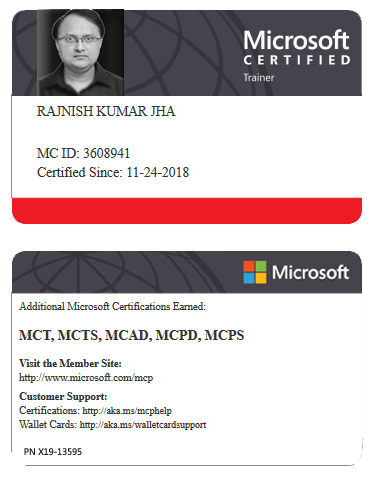Azure Monitor Alerts are an integral part of Azure Monitor, designed to notify users when a condition of interest is met, such as performance degradation, resource issues, or security anomalies. Alerts allow organizations to respond to problems proactively by triggering automated actions or notifying appropriate personnel when specific thresholds are breached.
Azure Monitor Alerts offer a wide range of monitoring capabilities, enabling the detection of issues in real-time across various Azure resources and services, such as virtual machines, databases, network services, and applications.
Key Concepts of Azure Monitor Alerts
Alert Criteria
Alerts are based on predefined conditions that involve metrics, logs, or events. These conditions define when an alert should be triggered.
Alerts can be set up using two main types of data:
Metrics-based Alerts: Triggered when certain metrics cross defined thresholds (e.g., CPU usage exceeds 90% for a virtual machine).
Log-based Alerts: Triggered based on a query of log data (e.g., specific error codes or patterns in diagnostic logs).
Alert Types
Azure Monitor offers two main types of alerts:
Metric Alerts: These alerts are based on the collection of resource metrics, such as CPU utilization, memory usage, disk I/O, network traffic, etc.
Log Alerts: These alerts are based on log queries, typically using Log Analytics (Kusto Query Language – KQL). Log alerts are more flexible as they allow querying over multiple resources or types of logs, such as Application Insights, activity logs, and diagnostics logs.
Severity Levels
Azure Monitor allows you to classify alerts by severity:
Sev 0 (Critical): The most urgent type of alert. Often requires immediate action (e.g., system failures, resource unavailability).
Sev 1 (Error): Significant errors that could lead to system degradation. Action is needed but can be addressed after critical issues.
Sev 2 (Warning): Events or conditions that suggest potential issues but don’t require immediate action.
Sev 3 (Information): Low priority alerts, often used for informational purposes, to track trends or low-impact changes.
Alert Thresholds
For metric alerts, users define thresholds that, when exceeded, trigger an alert. Thresholds can be defined with a specific numeric value (e.g., CPU > 80%) or relative conditions (e.g., increase in response time by 30%).
Log alerts are defined by KQL queries, where the result of a query triggers an alert (e.g., finding more than 10 "Critical" errors in application logs).
Action Groups
Action Groups are collections of notification and action settings that define who gets notified and what automated tasks are triggered when an alert occurs. These can be created once and reused across multiple alerts.
Actions can include:
Email Notifications: Alerts can send emails to administrators, developers, or any users within your organization.
SMS/Voice Notifications: Azure Monitor can send notifications via SMS or voice calls to stakeholders.
Webhook: You can trigger an HTTP webhook to invoke an external system, like sending alerts to a third-party ITSM (IT Service Management) system.
Azure Functions/Logic Apps: You can automate responses to alerts using Azure Functions or Logic Apps to execute custom scripts, scale resources, or perform other automated actions.
Azure Automation Runbooks: Alerts can trigger Azure Automation Runbooks to take corrective actions such as restarting a VM, scaling up resources, or applying a patch.
Alert Rules
An Alert Rule defines the criteria for generating an alert. A rule includes the following:
Target: The resource or resource group to be monitored (e.g., a virtual machine or an application service).
Condition: The specific metric or log query that defines when an alert should trigger.
Threshold: The limit that must be exceeded (for metrics-based alerts).
Frequency: How often the evaluation happens, allowing you to specify if the condition must be met continuously (e.g., for at least five minutes) or just for a brief moment.
Types of Alerts in Azure Monitor
Azure Monitor offers a wide variety of alerts based on different resource types and data sources. Below are the major types of alerts you can configure:
Metric Alerts These alerts are based on resource-level metrics (e.g., CPU usage, disk space, network traffic). Metric alerts are typically real-time and can trigger actions based on thresholds.
Example: You can set an alert to notify you if a virtual machine's CPU usage exceeds 90% for 5 minutes.
Scalability: These alerts are suitable for performance monitoring and scaling.
Log Alerts These alerts are based on log data from sources like Log Analytics workspaces, Activity Logs, Application Insights, or Azure Diagnostics logs. Log alerts are more powerful because they allow complex queries over historical data.
Example: A log alert can notify you if a certain error message appears in your application logs more than five times within an hour.
Query Language: Log alerts rely on KQL (Kusto Query Language) to filter and process log data.
Application Insights Alerts Application Insights enables you to monitor the availability, performance, and usage of your applications. You can create alerts based on application-level telemetry data, such as request rates, response times, exceptions, and dependency performance.
Example: Set an alert if the number of failed requests in your application exceeds a threshold.
Activity Log Alerts These alerts are tied to events in the Azure Activity Log, which tracks control-plane activities such as resource creation, updates, and deletions. Activity log alerts are useful for tracking changes to resource configurations or access permissions.
Example: You can create an alert to notify you if a user deletes a resource or changes permissions in your environment.
Service Health Alerts Service health alerts are triggered by issues or outages related to Azure services. You can configure these alerts to be notified when there are problems with the Azure platform itself (e.g., service outages, maintenance windows).
Example: Set an alert to notify you if there’s an outage in the Azure region where your resources are hosted.
Managing Alerts
Alert Settings
Alerts can be managed through the Azure Portal or via the Azure CLI, PowerShell, and REST APIs. From the portal, you can view and modify existing alerts, and you can filter by alert severity, status, and resource.
Alerts can also be suppressed for a short period if maintenance is planned, preventing unnecessary notifications.
Alert History
All triggered alerts are recorded in Azure Monitor, and their history can be reviewed. This is useful for auditing and understanding past incidents.
You can review alert details, including the triggering condition, actions taken, and who was notified.
Alert Evaluation
The frequency of evaluation (how often the alert is checked) and the conditions under which the alert triggers are configurable. For example, you may want to be alerted only when a metric is above a threshold for 10 minutes or longer, not just momentarily.
Best Practices for Azure Monitor Alerts
Use Appropriate Thresholds: Carefully define alert thresholds to avoid over-alerting or under-alerting. If the thresholds are too tight, you may receive too many alerts (alert fatigue). If they are too loose, you might miss important events.
Set Alert Severity Levels: Classify alerts according to severity to ensure that critical alerts (e.g., resource unavailability) are handled before low-priority ones (e.g., high CPU usage warnings).
Utilize Action Groups Effectively: Group your actions to minimize duplication. By using Action Groups, you can ensure that appropriate teams are notified across different alert rules without having to redefine notifications for each rule.
Create Custom Dashboards: Azure Monitor allows you to create Workbooks and dashboards to visualize and track alert trends. Custom dashboards can help display active alerts, past incidents, and patterns in resource behavior.
Integrate with External Systems: Use webhooks, Azure Logic Apps, or third-party ITSM tools (like ServiceNow) to automate incident creation, ticketing, and issue resolution processes when an alert is triggered.
Review Alerts Regularly: Set up periodic reviews of alert rules and thresholds to ensure they remain relevant as your environment changes. Outdated or irrelevant alerts can lead to confusion and missed important alerts.
Summary
Azure Monitor Alerts are a critical feature that helps organizations stay on top of potential issues by providing real-time notifications for important changes in their Azure environments. With metric-based alerts, log-based alerts, service health notifications, and flexible action groups, you can ensure that your team can respond quickly and efficiently to any system anomalies. By leveraging Azure Monitor Alerts in combination with other monitoring tools, you can maintain the health, availability, and performance of your Azure resources.




















Leave a Reply